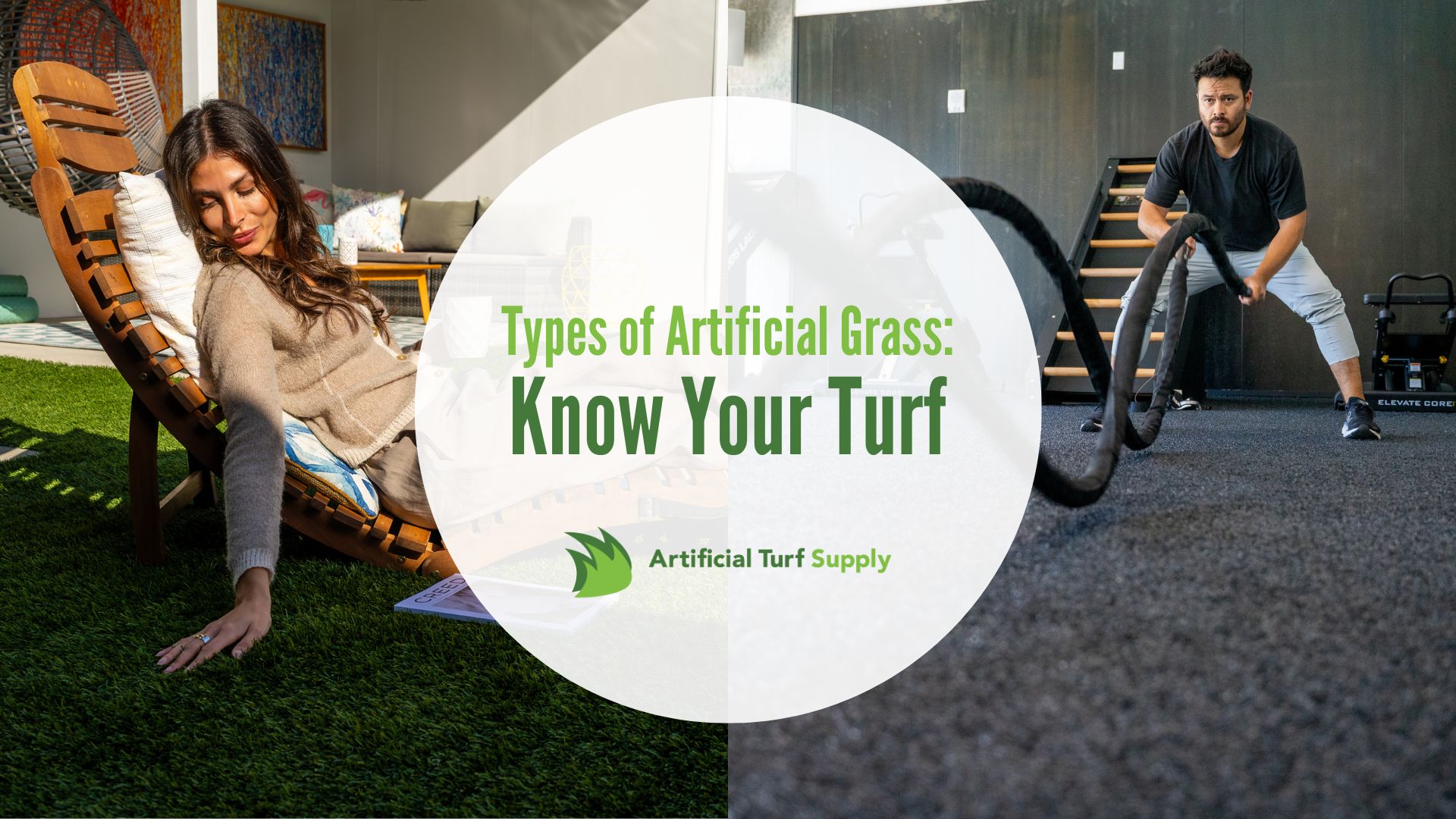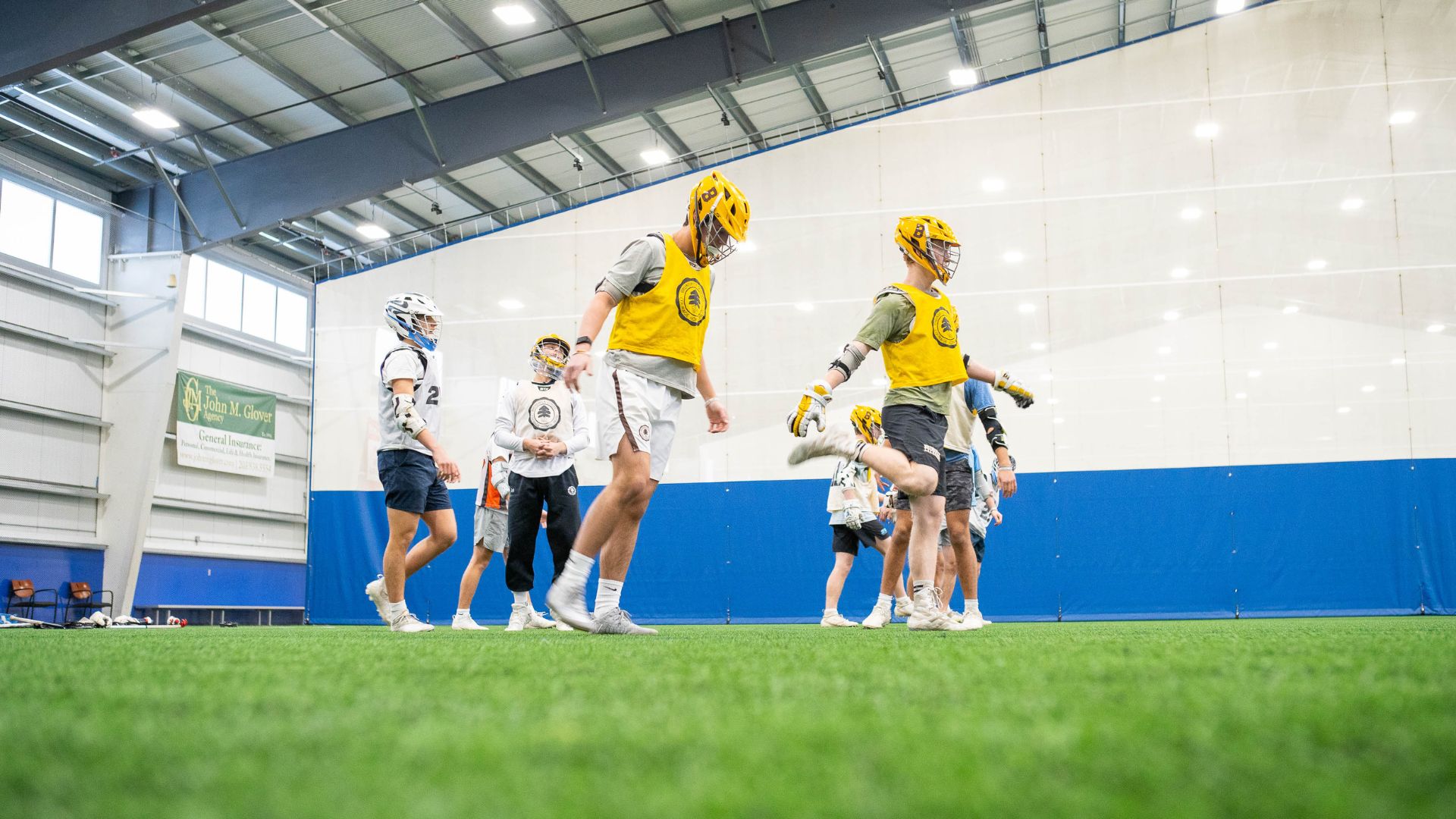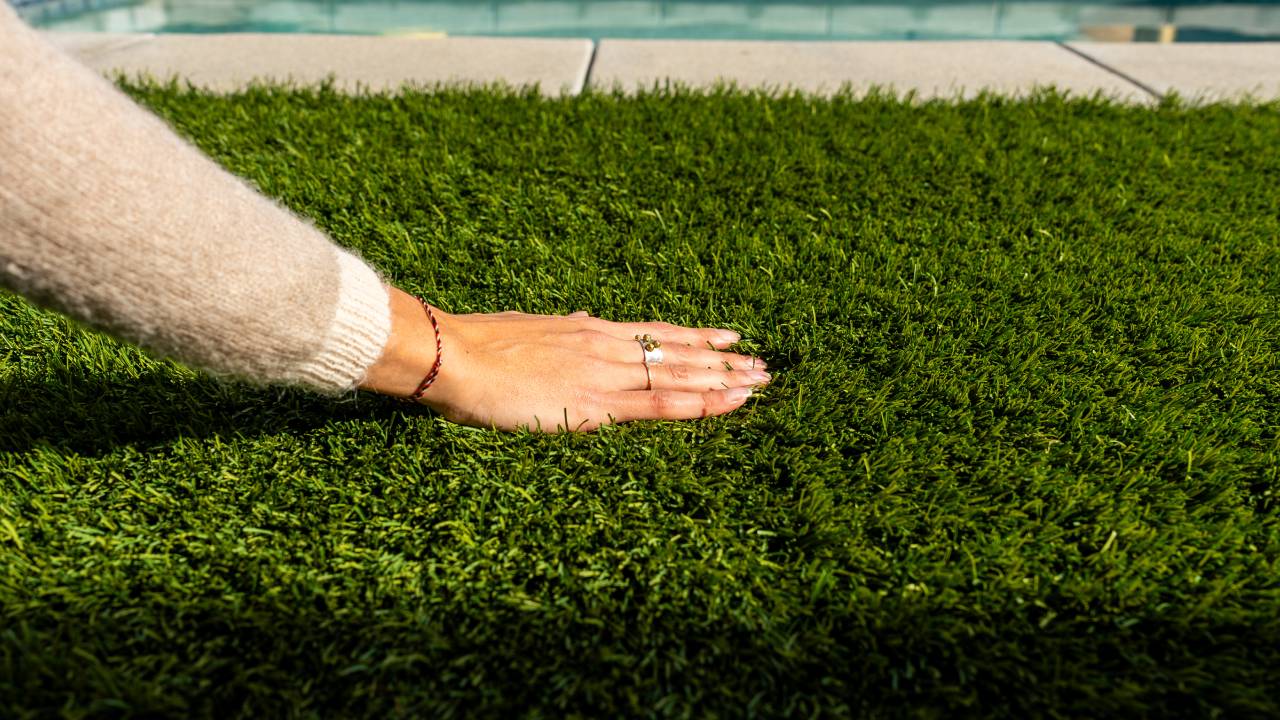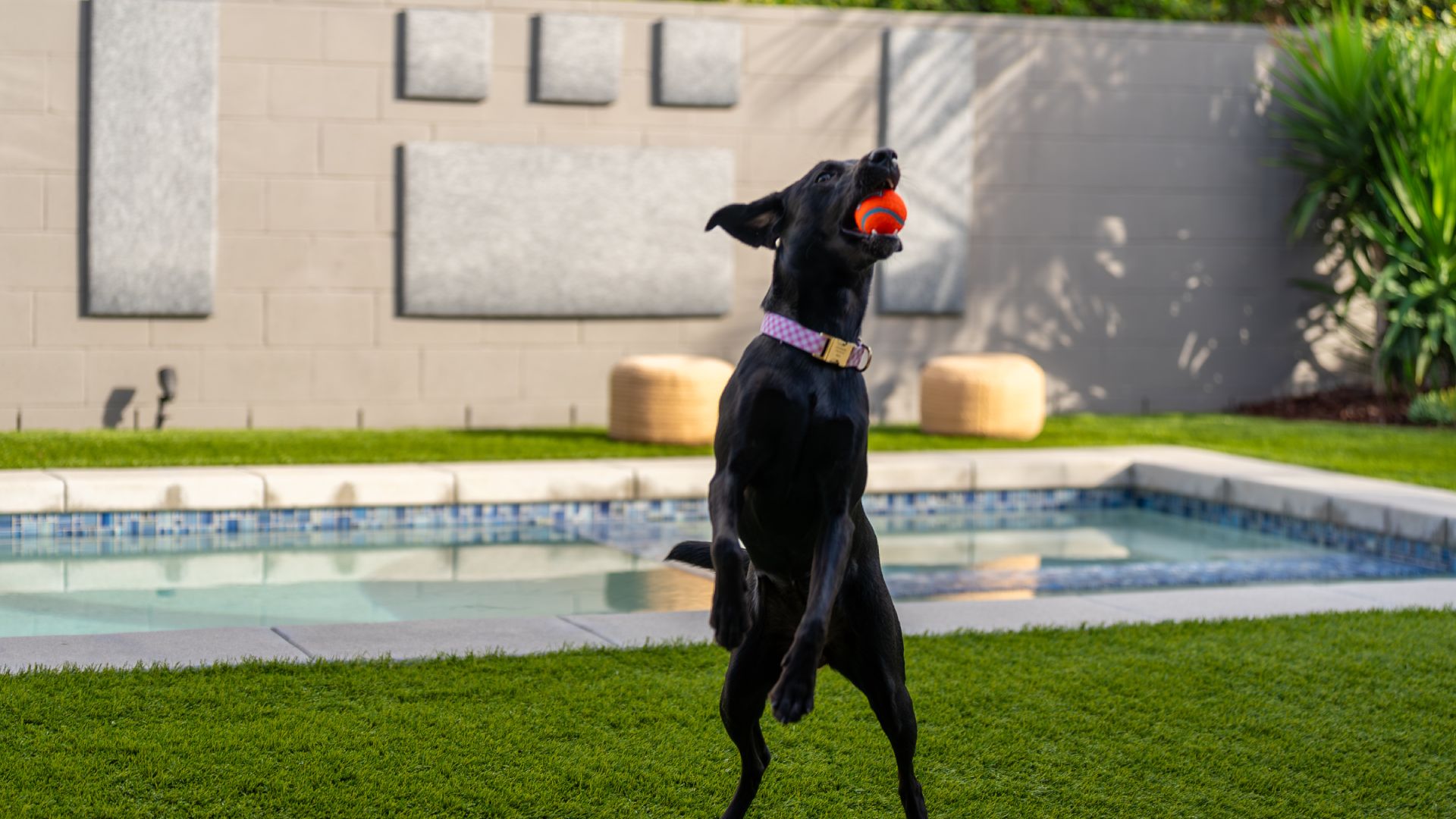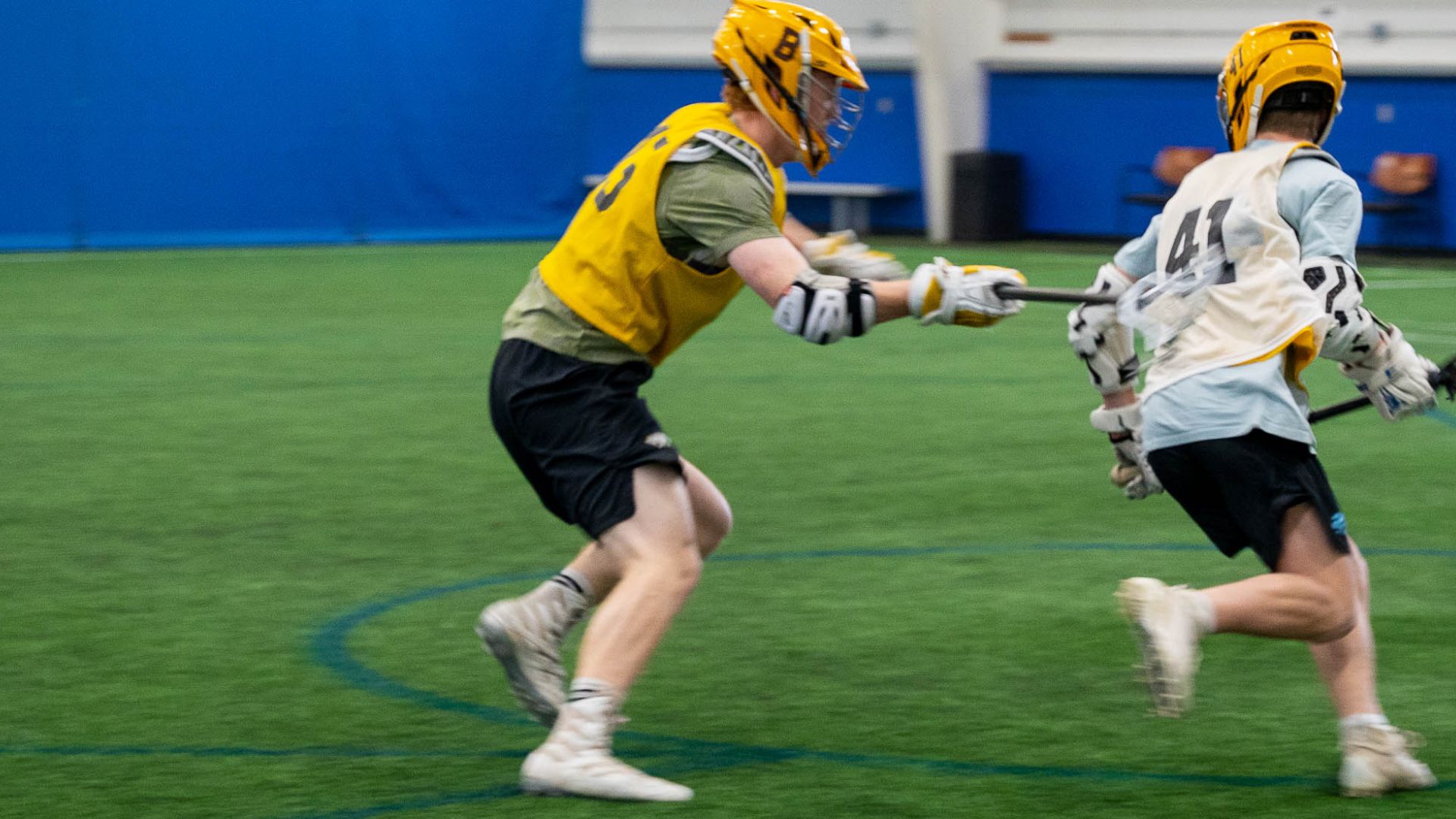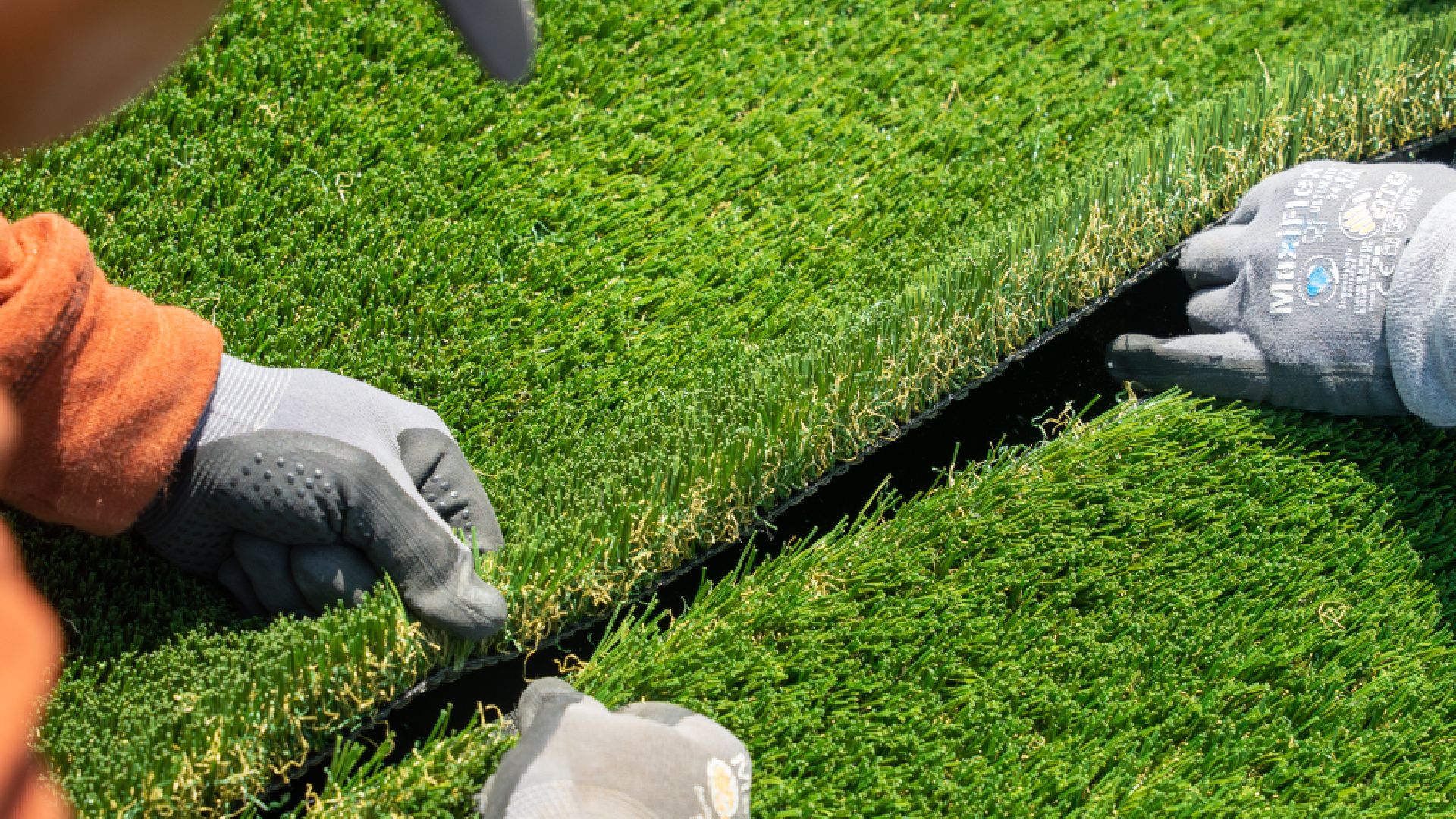You’ve probably heard many of the main reasons for choosing quality synthetic turf for your yard or outdoor space. It conserves water, it requires less effort, it looks great all year — these are all compelling reasons. But for discerning landscape shoppers, understanding the types of artificial grass and how they’re used is the best way to know that you’re choosing the right turf for your outdoor project.
The Artificial Turf Supply team is here to help, giving you all the necessary info on turf’s “big 3” materials: polyethylene, nylon, and polypropylene. What are they? How is each unique? And how do you know when to use which type? Plus, we’ll go over a few of the more important artificial grass choices you’ll have to navigate, as well as insights into some of the most common projects synthetic is used for (like pet-friendly, athletic, and putting turfs).
Alright, no more intro — let’s make sure you know your turf!
The Big Three Turf Materials
Understanding the main types of artificial grass starts with knowing the materials. Modern turf is most commonly made from one of three materials: polyethylene, nylon, and polypropylene. Each has its strengths, drawbacks, and uses.
1. Polyethylene (PE)
You Should Choose This If: you want a balance of natural appearance, comfort, and durability for a residential lawn that will see regular family use.
That’s because polyethylene is kind of the golden child of artificial grass materials. When you start researching the top options by the best installers, PE always shows up at the top of the list.
-
- Versatility: It’s the jack-of-all-trades in the turf world.
- Aesthetics: Offers a natural look with vibrant green colors and plenty of texture.
- Comfort: Feels softer underfoot compared to other options.
- Durability: Can take a beating and still look fresh.
Most of our top-performing, longest-lasting residential turf options are PE-based. And our clients are always happy with how it ends up looking and feeling.
2. Nylon
You Should Choose This If: you need extremely durable turf for high-traffic areas, sports fields, or you live in an area with scorching temperatures.
Nylon-based turf is just resilient stuff. It’s tough, it’s strong, and it’s not here to play games (though you can certainly play some serious sports on it). It’s often used in sports fields or as a supportive thatch layer in residential lawns.
-
- Strength: The most durable option available.
- Heat Resistance: Can withstand high temperatures without melting.
- Shape Retention: Keeps its form even under heavy use.
On the other hand, nylon can be a bit stiff. It’s certainly not our go-to recommendation if you’re looking for comfortable foot-feel and lounging.
3. Polypropylene
You Should Choose This If: you’re on a tight budget, need turf for a low-traffic area, or you’re using it for an indoor space or shaded area where heat isn’t a concern.
Your third main artificial grass material is polypropylene. You do see this in many spaces because it’s the budget-friendly option. That lower price tag does comes with some trade-offs, though.
-
- Cost-Effective: The most affordable of the three.
- Soft Touch: Has a pleasant feel underfoot.
- Limited Durability: Not ideal for high-traffic areas.
- Heat Sensitive: Can melt or warp in extreme heat.
Our Artificial Turf Supply teams sell a wide range of high-quality turf options, each uniquely made from the right base material for a specific purpose. We always start by working to understand our customers’ landscape or project goals, then help them find the right fake grass type, materials, and installation process.
Give us a call if you’re ready to talk about your artificial grass project: (866) 677-9405
Or if you’re looking to start pricing out your options, use our free turf quote tool.
Pile Height: Short and Sweet or Long and Lush?
There are a few more things you should know before you start choosing the types of artificial grass for your outdoor space. One of the first things to look at is pile height. That’s basically the length of the grass blades, and your choice of pile height can dramatically change the look and feel of your artificial lawn.
Short Pile (1/2 inch to 1 inch)
-
- Ideal for high-traffic areas
- Great for sports and play areas
- Easier to maintain
- Provides a neat, manicured look
Long Pile (1.5 inches to 2 inches)
-
- Offers a more natural, lush appearance
- Softer and more comfortable for lounging
- Requires more maintenance to keep it looking good
- Better for low-traffic, decorative areas
Color Me Green (Or Not!)
For every customer, and all types of artificial grass, color matters. Obviously, most residential or commercial spaces are looking for some variation of green for that natural, lush look. Sports turf and fake grass used for public recreation spaces (like kids’ parks) can have a wildly diverse range of colors. And then you also find those unique projects where a person just really, really wants purple grass (I’m talking about you, Die-Hard Vikings Fan I helped a few years ago).
-
- Multi-toned Green: Combines different shades for a more natural look.
- Brown Thatch: Adds depth and realism.
- Non-traditional Colors: Blue for sports fields, or even rainbow colors for playgrounds!
Color and pile height are such critical decisions for your turf project, and I always suggest shoppers ask for samples. You want to get a real understanding for how it looks and feels … not in a store, but out in the space you’re considering installing it. Artificial grass that looks great on a website or under a store’s florescent lights can look garish in your backyard.
Specialized Types for Specific Needs
Every artificial turf project is different, and require different types of artificial grass. But some landscaping solutions really do require a bit more knowledge and shopping to get just the right grass type.
Pet-Friendly Turf
If you’ve got furry friends, look for artificial grass with these features:
-
- Antimicrobial properties to fight odors
- Excellent drainage to handle, ahem, liquid waste
- Durable enough to withstand playful paws
Indoor or Outdoor Sports Turf
Sports turf is its own animal because of the sheer amount of abuse its going to take. You need a type of artificial grass that can not only survive, but will provide athletes with the right level of grip and cushion to keep them healthy and performing well.
-
- Higher density for better traction
- Specific pile heights for different sports
- Often includes shock-absorbing infill for safety
Putting Green Turf
Golf enthusiasts have their own artificial grass needs. I mean, a green with a bad break due to poorly-installed or incorrectly-chosen turf is no bueno.
-
- Very short pile height (about 1/2 inch)
- Dense fibers for smooth ball roll
- Often made with nylon for durability
My Two Cents on Choosing the Right Turf
Choosing the right types of artificial grass is important. That’s because high-quality, well-maintained turf will look and perform great for years, making the most of your investment. So as you’re researching and shopping, here’s our advice.
-
- Consider Your Usage: A front lawn for show needs different qualities than a backyard for kids and pets.
- Think About Maintenance: While all artificial grass is low-maintenance, some require more care than others.
- Feel It Out: Always request samples to touch and see in person before making a decision.
- Climate Matters: If you live in a hot area, avoid polypropylene and opt for heat-resistant options.
A Fair Warning About Installation: At the risk of sounding like a sales guy, I can’t stress how important it is to have a professional (or at least a experienced DIY’er) install your artificial grass. It doesn’t matter if you choose the exact right type of artificial grass if it’s installed poorly. It’s far too easy to end up with an uneven surface that looks bad, performs terribly, and falls apart way too fast.
Wrapping It Up
The types of artificial grass you shop for and choose can make or break your outdoor space. But now you know a bit more than the basics about tough-as-nails nylon, super-versatile polyethylene, and budget-friendly polypropylene. Your optimal turf type is out there.
Regardless of the type you choose, artificial grass is an investment in your property and your free time. No more mowing, watering, or fighting with weeds – just a perfect, green lawn all year round. Now that’s the type of lawn I can get excited about.


